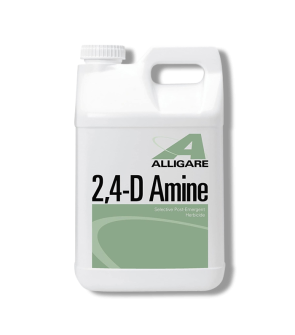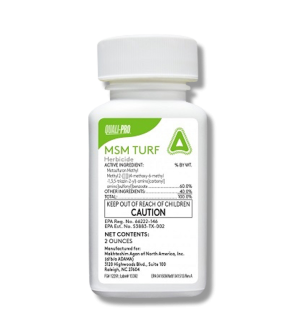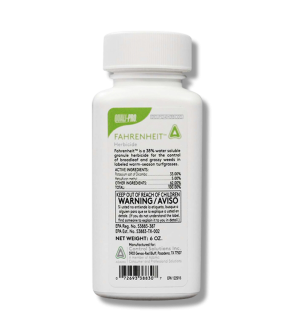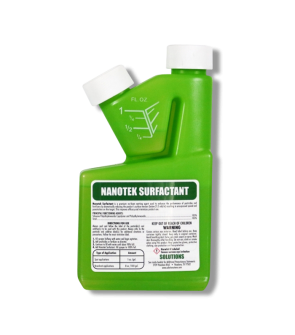Wild Carrot Control
Most Effective Products
Wild Carrot Control: How to Get Rid of Wild Carrot
Wild Carrot is a biennial broadleaf weed that originated in Europe and Asia. The wild carrot gets its name from the fact that the weeds; long white taproot, finely divided leaves, and foliage is similar to that of cultivated carrots.
Wild Carrot thrives in areas that are largely undisturbed such as roadsides and railways, hayfields and pastures, on lawns and around buildings. If left undisturbed, the weed can very quickly take over an area with a scattering of growth. In the first year, the plant forms a rosette of leaves before flowering, producing seed and then dying in the second year.
Wild Carrot growth is a particularly large problem on ranges and pastures due to its biology. Wild Carrot leaves contain nitrates and if consumed by livestock, the nitrates in the leaves act as a poison which can affect the nervous system of cattle and cause death. Also, people susceptible to allergies might find this plant can easily irritate their skin. For these reasons, finding a permanent way of eliminating weed is crucial.
If you are dealing with wild carrot weed on your lawn, our step-by-step DIY guide will show you exactly what you need to eliminate Wild Carrot quickly and affordably.
Identification
Before carrying out a treatment program, you will need to first be certain that you are dealing with wild carrot and not some other weed. Careless identification can lead to using the wrong treatment methods which can be a waste of time and money.

- Wild Carrot can be identified by its very unique flower which is shaped like an upside-down umbrella. Wild Carrot is also popularly known by another name, Queen Anne's lace, due to the resemblance of the plant being similar to that of the headdress that Queen Anne wore.
- They grow for two years, spending the first year as rosettes and the second year growing to flower. After a plant produces seeds, it dies.
- As a rosette, wild carrots grow long stalks with fernlike leaves. The flowers are a cluster of small white petals. Usually, there can be a purple floret in the center. The leaves of wild carrot look like domestic carrot leaves. The leaves come in a pinnate compound arrangement, meaning that they are very sharply divided by a midrib which looks like two leaves split but is actually one leaf. There can be some variation within these leaves.
- The leaf stem is round and hairy and you will notice a very distinct groove running down it. The plant also smells like a vegetable carrot and can make it easily identifiable. The plant can actually grow up to six and a half to seven feet tall. When growing to flower, wild carrots can be 1 to 4 feet tall.
- Unlike carrots grown for consumption, wild carrot taproots are pale white in color.
Use the above description and image to help you in properly identify wild carrot. If you are unsure whether or not the weed you are seeing is wild carrot or something else, you can always contact us and our lawn care experts will help to correctly ID your weed growth and suggest treatment options.
Inspection
After you have confirmed that you are dealing with wild carrot, you can then move on to inspection. During this phase, you will locate areas where wild carrot is thriving and observe the conditions that are allowing it to thrive. This information will help you in knowing where to focus your herbicide application.

Where to Inspect
Wild Carrot is a field loving plant and can be very active in fields, lawns, pastures, roadsides and along railroads.
They grow best in areas that get full sunlight in soil that is moist and acidic.
What to Look For
Look around your property and take note of where wild carrots are growing or where they can grow. Look for their white flower clusters within the plant’s height range of one to four feet. Look for their rosettes if the plants are young and newly established. If you find short rosettes closer to the ground, the plant is within its first year of growth. Taller plants that have bolted and are producing flowers are within their second year of growth. It is imperative that you control wild carrots before they produce seeds, as they spread rapidly once they’ve reached maturity.
Treatment
After identifying your weed and inspecting your property, it’s time to start treatment. Before starting any treatment, be sure to wear your personal protective equipment or PPE.
To eliminate wild carrots from your property, you’ll need to use a selective, post-emergent herbicide that’s labeled not to injure your property’s turfgrass.
Step 1 - Mix and Apply 2,4-D Amine

Before any application, calculate the square footage of your treatment area. Use this value to determine how much product to use. To find this, measure the length and width of the treatment area in feet then multiply them together (length X width = square footage). For acreage, take the square footage and divide it by one acre (square footage / 43,560 sq. ft. = acres).
When applied properly, affected weeds will yellow and begin to die. A follow-up application may be necessary if signs of recovery are observed, especially if the plant’s taproot is still alive.
Reapplication intervals with 2, 4-D Amine range from 21 to 30 days. Reapplication intervals with Fahrenheit range from 4 to 6 weeks.
Applications are most effective when the plant is budding before seed production. If the plants are close to producing seeds, you may need to mow the plant to prevent the weed from spreading.
The taproot will survive and grow a new plant over the next year, providing another opportunity to apply chemical control. Keep in mind that mechanical removal alone is not recommended, as it is easy to leave even a small part of the taproot in the ground when pulling weeds.
As long as a portion of the taproot remains alive, weeds like wild carrots will continue to grow and take resources away from your other plants.
Prevention
Once wild carrots have been removed, be sure they do not return. To stop wild carrot from returning to your property, be sure to take on some of the following preventative measures:

- One of the best ways to control wild carrots after they’ve been eliminated from your property is to mow them down if new plants start to sprout. When mowing lawns, simply mow regularly to the grass’s proper mowing height. Removing carrot plants before they can produce seeds will stop them from spreading onto your property.
- We also recommend promoting the health of your turf to reduce the conducive conditions that allow weeds and disease to take hold. Reduce the shade cast on your lawn by trimming overgrown shrubbery and tree branches, rake away leaf litter and pick up any debris, and employ a proper watering schedule to provide the local grass with enough water to strengthen its roots, but not so much that will encourage weeds. Many grasses require 1 inch of water every week. Apply the water all at once in the morning so it has time to seep into the ground without evaporating in the sun.
Key Takeaways
What is Wild Carrot?
- Wild Carrot is a biennial broadleaf weed that commonly grows in a variety of habitats and can very easily outcompete other species.
How to Get Rid of Wild Carrot
- We recommend 2,4-D Amine to treat wild carrot. Apply this product when the plant is young and in the basal rosette stage.
Preventing Wild Carrot Reinfestation
- To prevent wild carrot, maintain a thick nutrient-rich lawn, mow regularly and increase shade.

















































































































































































































































































































































































































































































































































